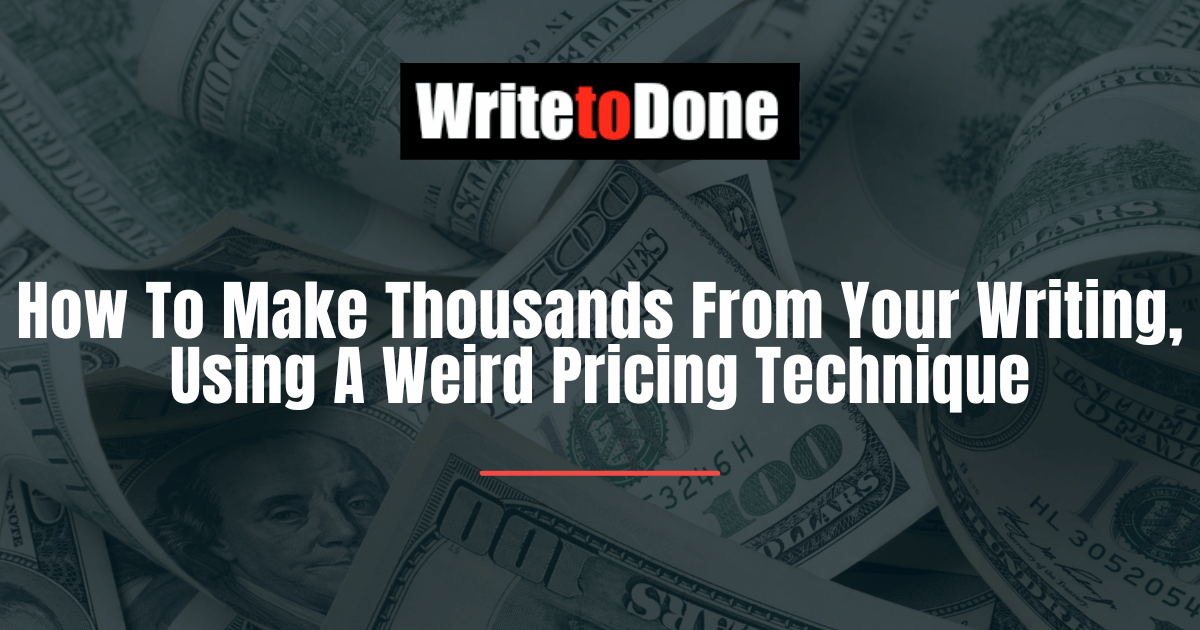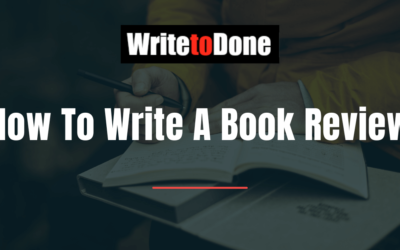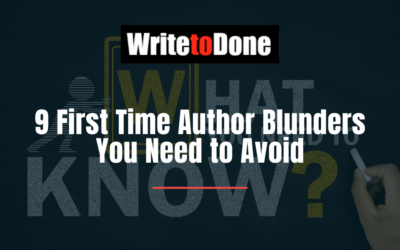Are you afraid to share your writing with the world?
I am.
And yet, I’ve made thousands from my writing, using a weird pricing technique.
I share my story to show you how to make thousands from your writing.
I’m a writing coward.
It took me close to 20 years to step up to the plate and publish my work.
Even when I finally started self-publishing, I did so under the guise of a hobby. If anyone asked why I was writing (no one did), I’d tell them I was writing because I loved it.
But deep down, I really wanted to see if I could hack it as a paid author.
Finding Validation as a New Author
For hundreds of hours over several months, I wrote on my blog. I was the only reader. I was so scared, I didn’t even tell my family about my new, all-consuming hobby.
Yet somehow, slowly, people found my website and started subscribing.
In April 2013, I finished my second book (the first I gave away free to new subscribers – all 10 of them). Having written thousands of words, dozens of articles, and several short guides by this time – all free – I wanted my writing to be validated. This meant I couldn’t just give it away.
There had to be an exchange of money.
It was time to sell my writing.
The Classic (and Broken) Approach to Pricing Your Book
Most new authors I know offer their books with a $.99 to $7.99 price tag on the Amazon Kindle store.
Next, they give it away for free for 3 days to boost (free) sales in the hope that their content will spread and make them more sales in the future (this time, paid).
The painful reality is this rarely pans out.
Usually, after the flash sale ends, sales trickle in. And as you probably already know, most authors sell less than 100 copies of their book – ever. Ouch.
Even worse: on Amazon, you don’t know who these customers are.
How am I supposed to validate my work if I can’t hear from the people buying and reading it?
A Weird Pricing Technique
So I did what any irrational, nothing-to-lose, hobby-writer would do in my situation.
I removed price altogether and gave the book directly to my readers.
I told them the book was free, but if they enjoyed my writing, they could contribute whatever amount they wanted.
I released the book on a random Sunday morning with a single short email to my subscriber list of about 150 people. I thought nothing would come of it and I was okay with that – it was a hobby, after all.
That afternoon, as I was enjoying Sunday-Funday in Nashville, my phone buzzed.
Someone downloaded my book – and contributed $10. Cool, I thought – that just paid for my next beer (high-gravity craft beer is expensive).
A little later my phone buzzed again. Another download, another contribution: $15. My phone kept buzzing.
By the end of the month I’d made close to $500 from this one book with no price tag and no promotion.
Does Pay What You Want Pricing Work for Other Authors?
If this worked so well for me, surely others had used it too. Of course they had.
- In 2012, TechDirt.com released several books as Pay What You Want. Their results: about half the people paid at least $5 with some paying upward of $20 per bundle.
- HumbleBundle.com experimented with a Pay What You Want science fiction and comic bundle that brought in over $1.1 million.
- Natalie Fee tried out PWYW for her poetry for one day and you can see from the comments section that she made upward of 3x per sale versus her retail price of £8.
- PaidtoExist.com gave their ebook and ecourse products away as Pay What You Want for one day and brought in over $2500.
- In the past year, I’ve made over $5,000 from my writing using Pay What You Want pricing.
There are dozens more examples of individual books and bundled products being sold as Pay What You Want.
Why Removing Price Works
There are 3 main reasons removing price from your writing works:
1. It removes the barrier to entry.
Many readers might be interested in your book, but the price tag can scare them away or make them delay their purchase (which usually means a lost sale).
With PWYW pricing, there is no barrier to entry, which means more people will opt in to get your work. More sales means more reach, more impact, and more revenue – if you do it right.
2. It removes the upper price ceiling.
The beauty of PWYW pricing isn’t just that it allows those with lesser means access to your work, but that it allows those with greater means the ability to give you more than your fixed price.
I’ve received several contributions upward of $100. That’s simply not possible with a fixed price.
By removing the upper limit, I let my biggest fans support me as much as they want. If you do the math, this more than makes up for those who pay little or nothing.
3. It inspires generosity.
Granted, I’ve tried to create a platform that encourages generosity, so my results could be abnormal, but the reality is: people are generous.
People are generous, but we need to give them a reason to be generous.
When the majority of businesses (and people) nickel-and-dime their customers, where’s the room for generosity?
Conversely, PWYW pricing allows us to give our work away freely and generously, while asking others to recognize this generous act and support our work. It might seem like an insignificant detail, but it makes all the difference in the world.
How to Apply Pay What You Want Pricing to Your Writing
Pay What You Want pricing can work – or not. The difference lies in the execution. (Writing really good stuff is a given.)
Here’s a 6-step framework you can use to apply PWYW pricing to your work to start leveraging the upside of your fanatical readership.
1. Clarify the impact of your writing and your PWYW offer.
Your writing and your Pay What You Want offer need to be clear, precise and powerful. As in: who’s the writing for, what’s the benefit, and why you’re using Pay What You Want pricing.
If it comes across as a sleazy, money-making strategy, it won’t work.
2. Build a relationship with your readers.
Readers have a unique relationship with their favorite authors. When you connect with your readers, you become a real, living, breathing human. And people support humans, not corporations or robots.
So get personal, connect, and build a relationship with your readers, and they will support you.
3. Tug on your readers’ generosity strings.
Lesson one in psychology 101: responses are triggered by stimuli.
In the case of generosity, the trigger is idealism. Sometimes appealing to their idealism is as simple as using words that trigger the response you want (words like: generosity, karma, or alluding to virtues, etc.)
Here’s an example from a recent email I sent, asking people to contribute to a new book I planned to publish using Pay What You Want pricing. My goal was to inspire generosity now, not later (i.e. don’t think about contributing – actually contribute):
The early adopters of the world are the people who make it possible for new artists, entrepreneurs, and authors to survive…so thank you in advance for being one of them. It means the world to me.
As you can see, anyone who reads this and wants to be an entrepreneur, artist or writer (or is one and recognizes the struggle we all go through as creators) is going to want to contribute generously.
This resulted in 30+ sales in the first hour, with an average price close to double the minimum bid of $5.
4. Anchor the price.
This is tough if you’re selling a fiction novel by itself, but if you’re selling more than a single work, price anchoring is key.
Price anchoring means showing a high-priced equivalent item next to your item, so people’s brains are anchored to (warmed up and ready to pay) the higher price. This technique is proven to get people to pay more for things from iPads to flatscreens to charitable donations.
The Storyline Conference recently released tickets as Pay What You Want. To encourage generous contributions, they included bonuses at the ‘suggested’ donation level of $249. Next to that, they had a ‘pro’ option for twice the amount.
I don’t have the stats, but it’s reasonable to assume the average PWYW contribution will be much higher because they had the $499 price anchor.
You can also anchor price by creating a list of the top 5 contributors.
5. Help the reader choose a price.
Pay What You Want pricing is confusing.
It may be a turn-off because it requires thinking. Your job, as the writer, is to make it so easy to understand that your reader doesn’t have to think (much).
Here’s how to do that: show your readers what a fair price would be. Also tell them what a generous price would be. (‘Buy me a nice steak dinner.’)
This clarifies the offer for your reader and helps them make a choice that will ideally be generous.
For example, when TechDirt.com ran an ebook experiment using Pay What You Want pricing, they preselected the $5 price point for customers.
Here’s what happened (bolded for emphasis):
“The thing we noticed right away was that a lot of people were choosing to pay, even though you can download all the books for free. Almost half of all book downloads were paid, with most people choosing the default $5 per book—even when buying four or five books at once — and several going above and beyond, with a few even paying $20 for a single title.”
6. Rally around a cause.
Pay What You Want pricing only works when there’s a strong message behind the pricing.
The truth is, slapping the $0+ sticker on your products won’t result in generous contributions. People need a reason to be generous.
The best way to do this? Create a cause around what you’re doing.
When Pulse magazine was about to go bankrupt in 2008, they did something crazy: they rolled out a PWYW campaign to resurrect their magazine. But they rolled out this offer along with the support of hundreds of artists who recorded limited-edition songs just for their PWYW campaign, to help get the magazine in the black.
Their cause: help a passionate, fan-focused, independent music magazine survive.
The response was incredible: They raised over $275,000 and gained 30,000 additional subscribers, at a time when most magazines were either in the red or going bankrupt.
If you want to take your cause to the next level, add charity to the mix. When we make our PWYW pricing a key element of raising money for a charity that is congruent with our message, it will most certainly increase contributions.
I know some writers will hate Pay What You Want pricing – it leaves us exposed and vulnerable – but for those willing to take a chance, you might be happily surprised by the results.
Have you ever considered letting your readers choose their price? Help out your fellow writers by sharing your stories – successes and failures!
I’d love to hear your thoughts in the comments below.


















